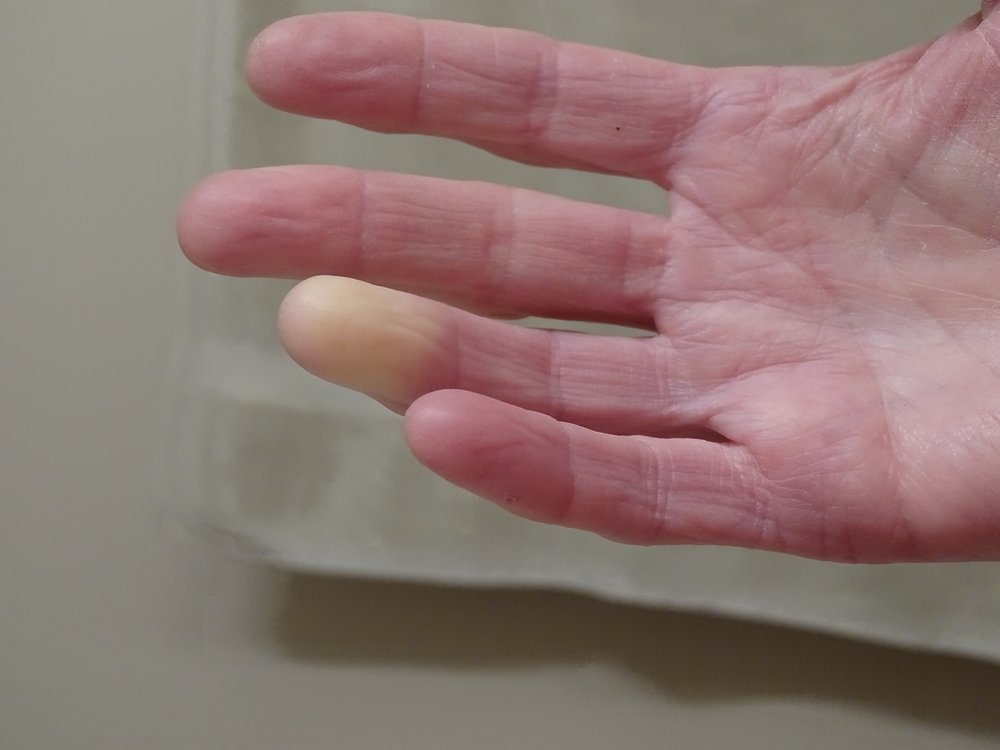Combined Imaging Approach Can Help Diagnose Scleroderma Earlier, Study Indicates
Written by |

The combination of three imaging techniques can provide a better understanding of structural and functional skin changes in the fingers, leading to an earlier and more accurate diagnosis of scleroderma, a new study suggests.
The study, “Combining optical coherence tomography with magnetic resonance angiography and Doppler ultrasonography for clinical detection of scleroderma,” was published in the journal The Anatomical Record.
Scleroderma is characterized by stiff and tight skin in the hands and feet, and by structural changes to blood vessels in the skin that reduce blood flow.
Early diagnosis usually leads to better outcomes following medical or surgical treatment. Diagnosing scleroderma typically involves assessing the hallmark clinical symptoms of the disease and detecting specific autoantibodies — harmful antibodies that wrongly attack healthy cells.
However, by the time these symptoms become evident, the disease may be at an advanced stage. That is why new approaches to diagnose scleroderma are needed.
As fingers and toes are often the first to show signs of the disorder, using appropriate imaging technologies to reveal local alterations is the most straightforward method for early disease detection. Yet, current imaging strategies do not provide a complete set of changes, revealing either tissue anatomy or functional and physiological information.
Magnetic resonance angiography (MRA) can detect structural changes in blood vessels and capture additional images of blood flow within tissues.
Doppler ultrasound (DUS) provides both superior bedside measurements of blood flow while also revealing skin thickness. However, this technique presents challenges to assessing minor changes in superficial tissues and requires skilled technicians. Meanwhile, optical coherence tomography (OCT) offers extremely high resolution to image skin structures and blood vessel networks.
A team from China developed an approach known as multimodal imaging that combines MRA, DUS and OCT to take advantage of complementary diagnostic information provided by all three techniques.
Three women with scleroderma — age 43–62 with either systemic or localized disease in hands, arms and abdomen — were examined by a rheumatologist. Three healthy volunteers also were included as controls. All six participants were assessed with the combined imaging strategy.
Results of MRA showed that, in contrast to the uninterrupted and undamaged vascular network in healthy fingers, the number of blood vessels was reduced in the patient without systemic scleroderma. In turn, blood vessel networks had almost disappeared and vascular walls were broken in a participant with severe disease.
Overall, MRA results revealed thickened skin in both mild and severe scleroderma cases.
DUS then showed that, compared to controls, the skin of the index fingers of affected participants had become hard, stiff, and thick.
OCT enabled a clear distinction of finger skin layers — epidermis, dermis and subcutaneous tissue — in the controls. However, in scleroderma patients, no such distinction could be made and no blood vessel structures could be identified.
The study also showed that while the fingers of controls had regular blood flow, no blood flow signals in the soft tissues of the fingers were detected in participants with mild or severe scleroderma.
“Multimodal imaging techniques offer a more comprehensive characterization of the morphological and functional information of biological tissues, which can assist physicians to achieve a more accurate SD [scleroderma] diagnosis,” the researchers wrote.
“It is expected that the multimodal imaging technique should assist in the diagnosis of SD with greater sensitivity, allowing earlier detection and imaging-guided monitoring of treatments,” they said.





